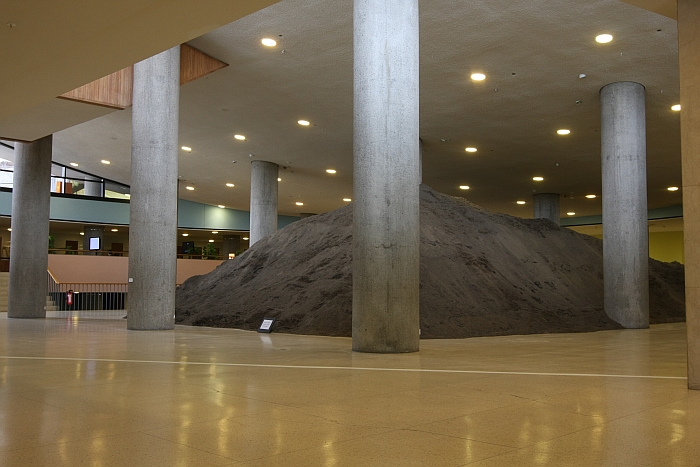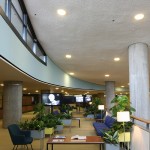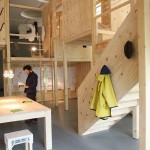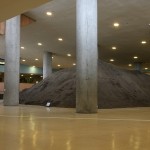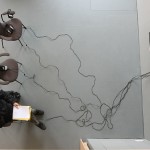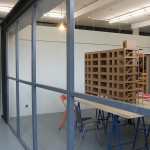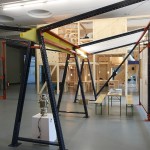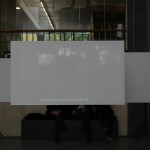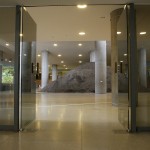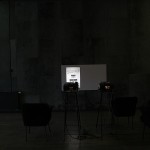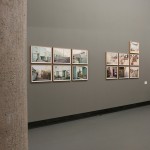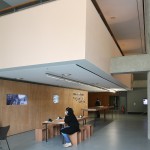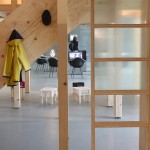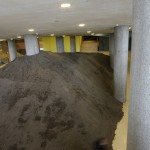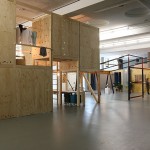Wohnungsfrage @ Haus der Kulturen der Welt, Berlin
“What is understood today as the housing problem is a specific intensification of the bad housing conditions endured by the working class through the sudden large scale movement of the population to the major cities; huge increases in rents, an even greater overcrowding of individuals in houses, and for some the impossibility of even finding suitable accommodation.” 1
Although written in 1872 Friedrich Engels analysis of the urban housing situation remains in many ways as contemporary as it ever was. In Europe we have may have lost the perpetually flooding windowless cellar flats which, literally, formed the very lowest level of 19th century urban accommodation, but our modern, hi-tech cities still suffer from chronic shortages of affordable, hygienic housing where the residents have a degree of security in terms of tenancy rights and privacy. Outwith Europe the perpetually flooding windowless cellar flats, or at least their local equivalents, remain a reality.
But what to do? Knocking down our cities and starting again isn’t an option. So what are we to do?
As part of their programme “100 Years of Now ” the Haus der Kulturen der Welt in Berlin is staging the exhibition “Wohnungsfrage”, an exploration of the contemporary housing situation and a presentation of some possible solutions.
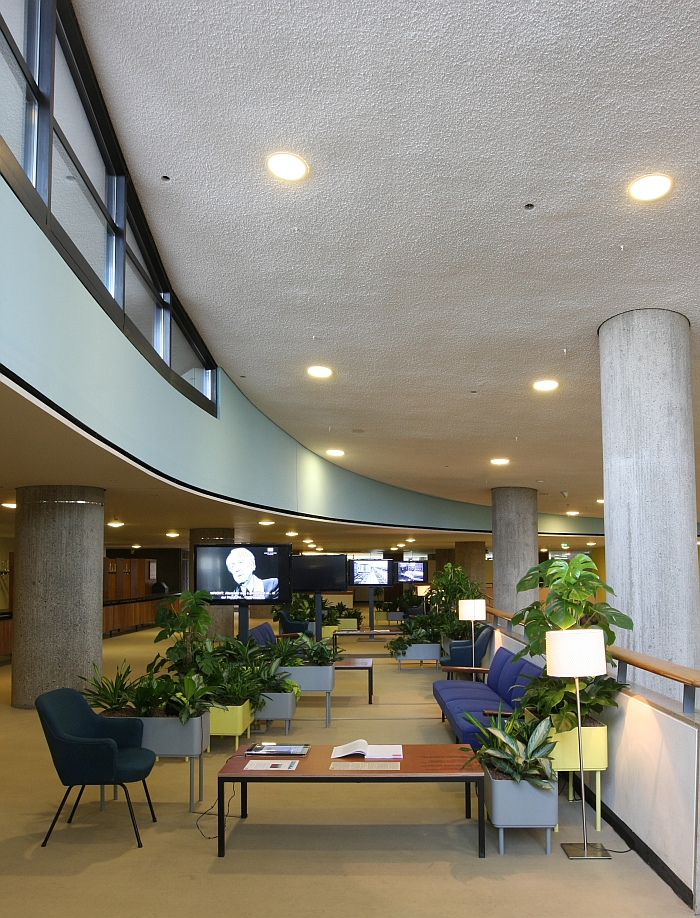
House Housing by Temple Hoyne Buell Center for the Study of American Architecture, as seen at Wohnungsfrage, Haus der Kulturen der Welt Berlin
The exhibition title refers to Friedrich Engels’ 1873 publication “Zur Wohnungsfrage” – On the Question of Housing. Originally published as a series of essays in the Leipziger Volksstaat the texts largely concern themselves with the situation of urban workers accommodation in the later half of the 19th century and in particular Engels’ criticism of the solutions being proposed at that time. According to Engels the problems of that period principally arose on account of the large influx of the rural population to badly prepared urban centres.
And today? From where does the contemporary housing problem arise? Is it, as in the 19th century, largely a question of demographic change?
“The situation today doesn’t stem from demographic change”, says exhibition co-curator Jesko Fezer, “here in Germany we have no population explosion, also the pressures caused by migration are a long way from dramatically affecting the population numbers. Much more it can be traced to systematic failures on the part of politicians and the reliance on a false ideology, namely the belief that the privatisation of social housing construction would stimulate the market and lead to the supply of sufficient housing for lower earners. Such has not been realised, rather the amount of social, affordable housing has sunk, while the need has grown.”
Two sources, one consequence.
Friedrich Engels’ identified three groups as being, theoretically, in a position to alleviate the housing problems of the late 19th century: the capitalists, but it wasn’t in their interest to solve the situation; the politicians, but it wasn’t in their interests to solve the problems; and the workers themselves, who were unable to solve the problems.
Similarly Jesko Fezer places little faith in the politicians and the building industry, “I think it would be an error to wait until a well meaning construction company suggests a good project, I think it would be an error to hope that an investment company who work on the principle of a good return on their investment contribute to social housing projects, and it is also an error to wait until local politicians or local authorities, undertake serious programmes”, as a third alternative Jesko Fezer sees, rather than the affected individuals themselves, much more the greater integration of and involvement from urban initiatives and civic stakeholders in housing questions, something which for Jesko Fezer also involves “the development of new models for the building, planning and financing of housing”
The central focus of Wohnungsfrage is just such new models.
For the exhibition four grass roots German initiatives were each paired with an international architecture bureau and asked to develop a solution which approached and tackled questions such as who decides how and what should be built and how can we best achieve affordable, socially responsible and autonomous housing that focuses on the users? Kolabs, an amalgamation of various, largely, student initiatives and Tokyo based Atelier Bow-Bow developed Urban Forest, a prototype of a communal living space specially focussed on students; Frankfurt based Realism Working Group cooperated with Pier Vittorio Aureli and Martino Tattara a.k.a Dogma architects to design a communal villa intended for artists and other creatives which re-imagines the classic example of housing as a symbol of economic and social power into a collective environment; the Berlin tenants rights initiative Kotti & Co together with San Diego based Estudio Teddy Cruz + Forman have evolved the former’s “Gecekondu” concept, a wooden temporary pavilion system developed in context of rent protest camps, into a steel temporary pavilion system which can be locally adapted; and last, but by no means least, Stille Straße 10, a self-managed community centre in Berlin were paired with London agency Assemble and together developed a housing concept for senior citizens which allows the residents to live autonomous lives as integrated members of a community.
The results of the four projects are presented in 1:1 models, the visitors being invited to critically investigate the proposed solutions and form their own opinion on the approach and thus consider in more depth the issues and problems involved. The combination of international bureaus with German initiatives highlighting the intended universality of the proposed solutions.
In addition to the architectural projects Wohnungsfrage presents research projects, historic case studies and artistic interventions concerned with the broader themes of the exhibition and which not only provide fresh insights and perspectives but also expand the scope of the exhibition and underscore what Engels noted namely “This housing problem is not particularly contemporary…..rather it has affected all oppressed classes of all ages equally.”2
That the exhibition is being staged in the Berlin Kongresshalle that the Haus der Kulturen der Welt calls home is not irrelevant. The Kongresshalle originated as part of the 1957 Interbau building exhibition, an exhibition which explored new construction methods which would allow the authorities to quickly and efficiently house the rapidly expanding post war European population, and that in hygienic and functional future orientated objects. As an event Interbau 57 not only gave Berlin the Kongresshalle and the ever magnificent Hansaviertel with its buildings by, amongst others, Alvar Aalto, Egon Eiermann, Oscar Niemeyer and Arne Jacobsen, but also allowed Le Corbusier to realise a Unité d’habitation in the German capital – the only such example outside France.
With his Unité d’habitation concept Le Corbusier sought contemporary solutions to questions of contemporary housing based on the needs of the contemporary user. That we’re not all living the Le Corbusien utopia, and still have unsolved housing problems, perfectly illustrating that just because architects have ideas doesn’t mean that they are realised, political action is also required. Or put another way, it doesn’t matter how big your vocabulary is and how confidently you can use clever words if no one is actually listening to you.
And therein lies the eternal problem of exhibitions such as Interbau or Wohnungsfrage, change is reliant on political support, or at least large scale popular support that subsequently leaves politicians with no alternative. And no exhibition is going to achieve that. Ever. Which obviously doesn’t mean you shouldn’t try, but does mean you should be realistic about what you can achieve: and ideally conceive your exhibition so that you can reach as broad a cross section of population as possible and so hopefully plant a few seeds that later germinate into popular action. No one, but no one, needs an architecture exhibition which is only viewed by architects, stroking their chins and nodding knowingly as they amble through the space.
Fortuitously Wohnungsfrage is a very accessible and well presented exhibition which can be understood and appreciated on a number of different levels and which presents an honest and informative overview of the subject and which, and perhaps most importantly, stimulates you to consider the contemporary housing situation.
And yes, the exhibition does take a left leaning anti gentrification, pro community position, you’ll find for example no arguments in favour of expanding private home ownership or of building on greenfield sites as solutions to the problems; however, it is not a political exhibition, there is no sloganeering or ideology to battle through. The focus is the projects being presented not their political affiliation.
In addition, for a subject as wide ranging as housing and/or urban planning there can never be one perfect solution, only ideas that work with more or less degrees of success. Something Friedrich Engels didn’t understand and who thus used the pages of the Leipziger Volksstaat to rubbish and decry every proposed solution, while, and in true Engelian fashion, insisting every five paragraphs that only his solution would and could work.
The organisers of Wohnungsfrage are, thankfully, less dogmatic, more realistic and thus parallel to the exhibition Wohnungsfrage also features a series of talks, debates and a week long academy in which the current situation will be discussed and possible ways forward proposed. Additionally a series of texts on housing and the housing situation are being published in an attempt to stimulate a wider, more open debate, the series includes contemporary texts as well as historic texts such as The Growing House by Martin Wagner, Co-op Interieur Hannes Meyer, and naturally Zur Wohnungsfrage.
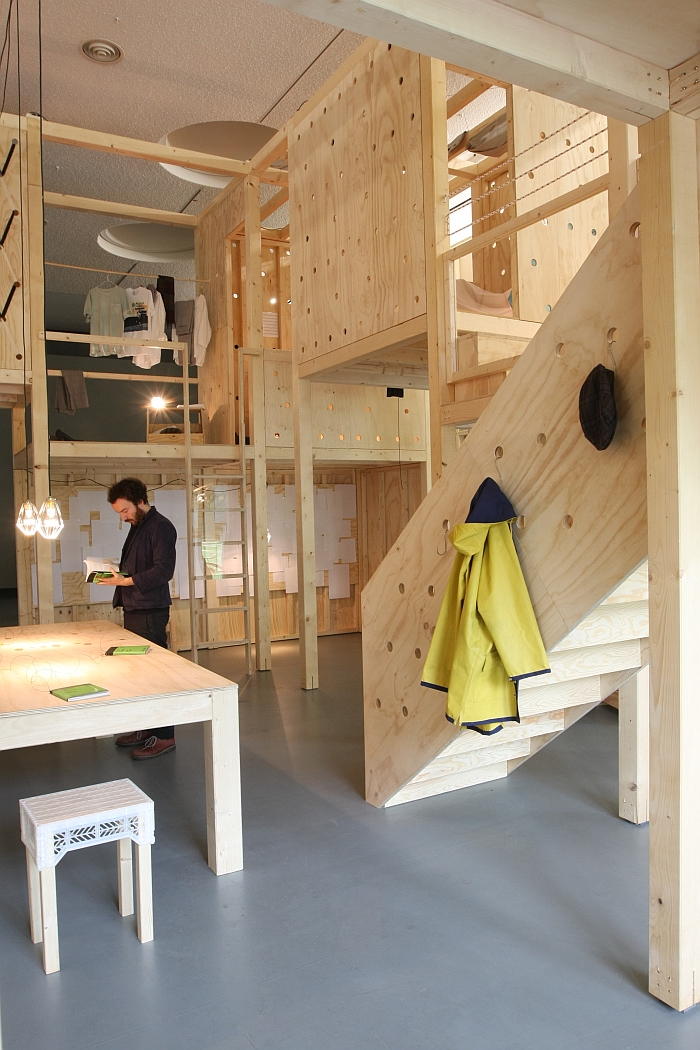
Urban Forest by Kolabs and Atelier Bow-Wow, as seen at Wohnungsfrage, Haus der Kulturen der Welt Berlin
All of which leaves just one question unanswered.
In his original texts Friedrich Engels repeatedly states that the housing problem is but a secondary symptom of capitalist production, and that as such can only be solved by a social revolution and the abolition of the capitalist mode of production.
Can the exhibition thus be see as a call to revolution?
“Engels was 100% correct when he described the housing situation as a symptom, and the problem we have today is a symptom of a neo-liberal economic system, and changes in the housing situation require changes on the social and political levels.”, answers Jesko Fezer, “we however would argue that the housing question is more than a symptom, it can also be a starting point and there are many examples in housing of imagining new societies, of developing new ways of coexisting, of alternative economic systems that can serve as examples for other areas.”
Solve the housing problem and thereby cure society’s other ills. We can’t imagine Friedrich Engels would have been particularly impressed by such an argument. But then Engels never really understood the importance of dialogue. Wohnungsfrage does and invites all to participate. Even Proudhonists.
Wohnungsfrage runs at the Haus der Kulturen der Welt, John-Foster-Dulles-Allee 10, 10557 Berlin until Monday December 14th. The exhibition is bilingual German/English.
The accompanying texts are published, bilingual German/English, by Spector Books, Leipzig
Full details on the exhibition, accompanying fringe programme and the publications can be found at www.hkw.de
1.Friedrich Engels, Zur Wohnungsfrage: die grundlegende Schrift zur Wohnungsfrage im kapitalistischen Staat und in der Übergangszeit, Oberbadischer Verlag, Singen
2. ibid
- House Housing by Temple Hoyne Buell Center for the Study of American Architecture, as seen at Wohnungsfrage, Haus der Kulturen der Welt Berlin
- Urban Forest by Kolabs and Atelier Bow-Wow, as seen at Wohnungsfrage, Haus der Kulturen der Welt Berlin
- Berlin Excavation by Lara Almarcegui, as seen at Wohnungsfrage, Haus der Kulturen der Welt Berlin
- Studying Florian Zeyfang, Lisa Schmidt-Colinet & Alexander Schmoeger, as seen at Wohnungsfrage, Haus der Kulturen der Welt Berlin
- Teilwohnung by Stille Straße 10 + Assemble, as seen at Wohnungsfrage, Haus der Kulturen der Welt Berlin
- Inside Communal Villa by Realism Working Group and Dogma, as seen at Wohnungsfrage, Haus der Kulturen der Welt Berlin
- Retrofit-Gecekondu by Kotti & Co Estudio Teddy Cruz + Forman, as seen at Wohnungsfrage, Haus der Kulturen der Welt Berlin
- Enjoying Miete Essen Seele Auf by Angelika Levi, as seen at Wohnungsfrage, Haus der Kulturen der Welt Berlin
- Berlin Excavation by Lara Almarcegui, as seen at Wohnungsfrage, Haus der Kulturen der Welt Berlin
- Von der Mietkaserne zur Frankfurter Küche by Franziska Bollerey, as seen at Wohnungsfrage, Haus der Kulturen der Welt Berlin
- Catarina Alves Costa, André Cepeda & Delfim Sardo, as seen at Wohnungsfrage, Haus der Kulturen der Welt Berlin
- Wohnungsfrage @ Haus der Kulturen der Welt Berlin
- Wohnungsfrage @ Haus der Kulturen der Welt Berlin
- Yes. We’re obsessed
- Wohnungsfrage @ Haus der Kulturen der Welt Berlin
Tagged with: Berlin, Friedrich Engels, Haus der Kulturen der Welt, Wohnungsfrage
